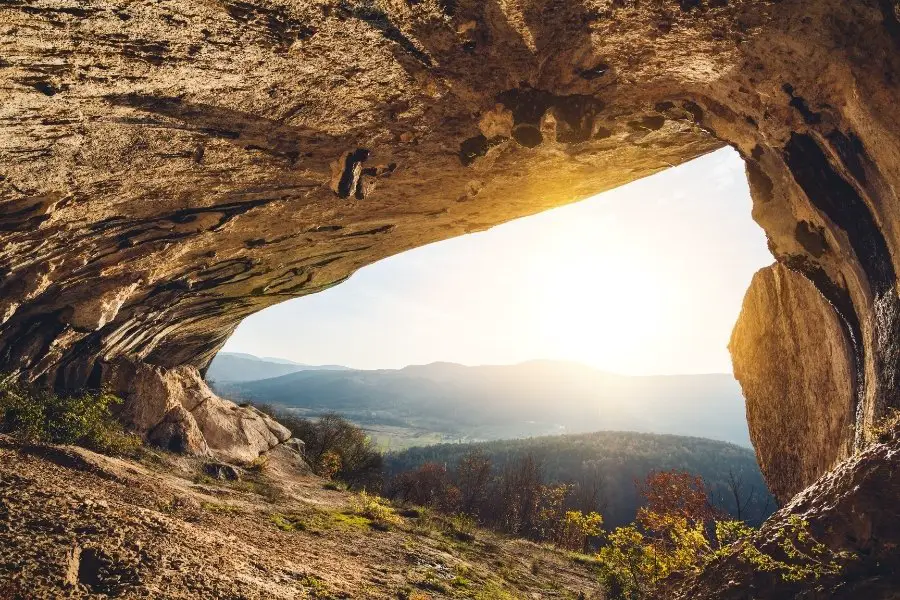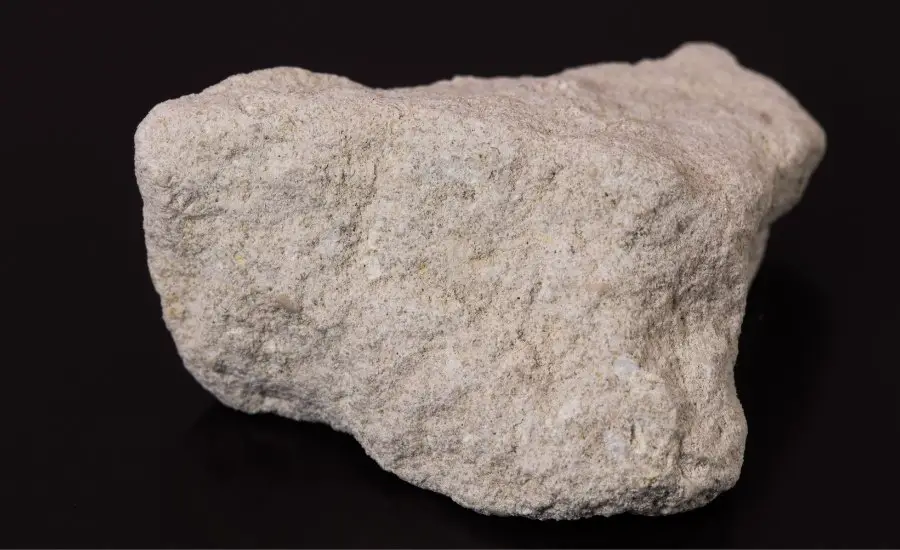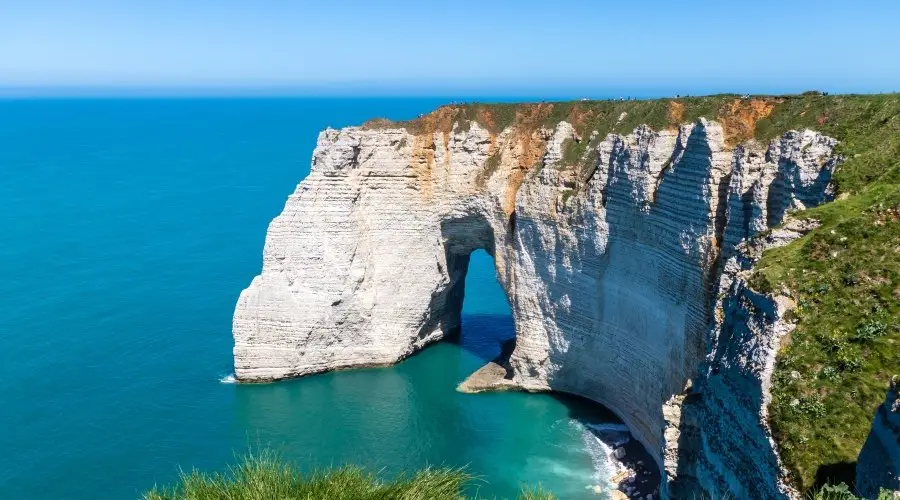Limestone is a rock that seems to have a love-hate relationship in the climbing world. Some climbers think limestone is the best rock for climbing while others avoid limestone climbing whenever possible. As a geologist, I was pretty curious to see how limestone’s characteristics lend themselves to the world of rock climbing. Here is what I found out:
As a general rule, pristine limestone is a good rock for bouldering and sport climbing but not trad climbing. Limestone climbing tends not to be good until climbers reach an intermediate to advanced level when they can take advantage of its best climbing features. A large portion of the world’s limestone is not suitable for climbing due to its rapid erosion in wet acidic climates.
As you may have guessed, not all limestone climbing areas are created equal. Some are world class that attract climbers across the world while others leave climbers with a bad taste in their mouths. This article explores the relationship between limestones’ characteristics and climbing. In addition to this, a list of some of the best places to climb on limestone is provided at the end!
If you are a big geology nerd like myself and want to learn more how all rock types affect climbing, I recommend checking out this book on Amazon!
How Limestone’s Characteristics Translate To Rock Climbing

Limestone is a sedimentary rock primarily consisting of calcium carbonate that is predominantly formed on the seafloor. Fossils of marine organisms are commonly found in limestone at varying abundance. The calcium carbonate composition of the limestone causes the rock to react and erode when it comes in contact with water depending on the fluid’s acidity. For example, rain water is acidic as it typically has a pH between 5.6 and 5.8. The more acidic the fluid, the more the limestone will react and erode.
In the geology world, calling a rock a “limestone” is quite broad and encompasses a wide variety of different rock types. A limestone is typically classified to be more specific based on its composition and characteristics. Whether you are looking to refresh your limestone geology knowledge or are curious in learning more about the science of limestone, I recommend checking out the information on GeologyScience.com. If you are wondering if there is a best rock for climbing, check out my article here.
How Good is Limestone For Rock Climbing
Generally, unweathered limestone is strong and solid which provides climbers with a strong surface to climb on. Limestones with a lot of marine fossils in them typically have a very climber friendly texture and provides them with a lot of grip whereas limestones with little to no fossils are typically a bit more slick.

It hasn’t been called the best rock for sport climbing by some climbers for no reason. However, this statement does not seem to apply to all sport climbs. Limestone routes definitely seem to favor the more experienced and high level climbers than the beginners and less skilled.
Limestone is typically not the best rock for beginner climbers but becomes better for climbing as the route difficulty increases. Lower grade limestone routes (5.10d and below) tend to have slick polished holds and sharp edges. Harder limestone routes (5.11 and up) are commonly overhanging and provide climbers with better and more textured holds.
Although pristine limestone is strong and solid, it can erode very easily when subjected to wet climates. This erosion can make the rock very featured but too weak to climb on. Due to its weak nature when heavily featured, the rock does not provide climbers with a lot of suitable placement options for their protection.
As a general rule, limestone is great for sport climbing but is not suitable for trad climbing due to its lack of solid spots to place protection.
Granite on the other hand is very well suited for trad climbing. I recommend checking out my article detailing granite’s climbing characteristics as well!
Limestone Rock Climbing Features
Because limestone reacts with slightly acidic water (i.e. rain) and begins to erode, it typically becomes incredibly featured. This causes incredibly unique features to form in the rock. In addition to vertical cliffs, limestone is known for providing climbers with tufa formations, overhanging routes, karst caves, and solution pockets.
Tufa Limestone Climbing Features
Tufa is a form limestone in which the carbonate minerals precipitate out of ambient temperature water. It is a very porous and textured rock which provides climbers with incredible grip and friction when climbing it.
While it can form in a few different environments, the most important to the climbing world is when it forms a “rib” on the wall. These tufa ribs provide climbers with incredible natural lines of perfect pinches and toe hooks that are not available on any other type of rock. Check out the timestamped YouTube video below to see what climbing on tufa routes can be like.
While I have never personally had a chance to climb tufa, I have heard stories of its brilliance.
Limestone Overhanging Cliffs And Karst Cave Climbing Features
Just because not every limestone will have seams of tufa running down it, doesn’t mean they don’t provide climbers with an awesome climbing experience. Limestone commonly forms overhanging cliffs and karst caves. These overhanging cliffs and caves are typically a lot less polished than the vertical faces of limestone as they are subjected to less weathering.
This is part of the reason why you may hear that limestone climbing “doesn’t get good until 5.11”. This statement is typically referencing the easier, less steep climbs (90 degrees and less) in which the limestone texture is typically eroded away to be slick and sharp.
Limestone Solution Pocket Climbing
In addition to the formation of tufa, caves, and overhanging cliffs, solution pockets are commonly found in limestone. The size of these solution pockets typically range anywhere between monos (1-finger pockets) to whole hand/toe box sized.
The Effects of Weather Conditions and Weathering on Limestone Climbing
Weather conditions such as precipitation and wind have both short and long term effects on rocks.
How Weather Conditions Affect Climbing on Limestone
Because many limestones typically have already started to dissolve and erode away, their relative porosity is typically pretty high. This allows water to enter in the cracks, joints and pockets of the rock when it rains. This can severely weaken the rock’s integrity and lead it to be unsafe to climb on.
In addition to this, the vertical limestone faces can become very slippery when wet (especially when the rock is polished to begin with). While this may not seem like a big deal at first, it can be quite dangerous. Slipping off a hold when you are not expecting it is an easy way to bang up hard against the rock and seriously hurt yourself.
While limestone does not typically take as long as sandstone to dry out after a rainstorm, it still may take a while. How quickly the rock will dry actually depends on a variety of factors including the amount of wind, humidity, temperature, and cloud cover among others. It is good practice to wait at least 24 hours before climbing on limestone after a rainstorm.
As a general rule, you should not climb on wet limestone as it can absorb water, lose its strength, and become very slippery. Climbing on wet limestone can break off holds from a route and can be very dangerous. Limestone can take over 24 hours to dry depending on the rock’s porosity and local weather conditions.
How Long Term Weathering Affects Climbing on Limestone
As mentioned above, limestone begins to erode away when it comes in contact with acidic water. The rate at which the rock will begin to erode primarily depends on its chemical composition, the degree and duration of its exposure to water, and the water’s acidity.
As it weathers, the limestone’s texture starts to erode away which can cause it to become slick and polished or become heavily featured but too weak to climb. Overhanging limestone tends to weather less than vertical faces as it is not subjected to as much precipitation or runoff water.
As a general rule, limestone will become more brittle and start to crumble as it weathers over time. As you may have guessed, climbing and placing protection on weathered limestone is extremely dangerous. DO NOT DO THIS. Only climb on limestone that you know is fresh and solid. It is not worth taking the risk.
Best Places to Climb On Limestone
Let’s take a look at some of the best places for limestone climbing in the world. Below are 9 areas with fantastic limestone climbing routes/problems.

9 of the Best Spots For Limestone Rock Climbing
- Verdon Gorge, France
- Wild Iris, Wyoming
- Tufa City, Arizona
- Shelf Road, Colorado
- Rifle Mountain, Colorado
- Mount Charleston, Nevada
- Castle Hill, New Zealand
- Arco, Italy
- Ten Sleep, Wyoming
Every single spot above provides climbers with unbelievable limestone climbing experiences.
Disclaimer: Rock climbing is a dangerous sport which has the potential to result in serious injury or death. This article was written solely to provide information and insight pertaining to the relationship between geology and rock climbing. The information in this article is not to be relied on for guidance pertaining to the health and safety of any rock climbing activities.

